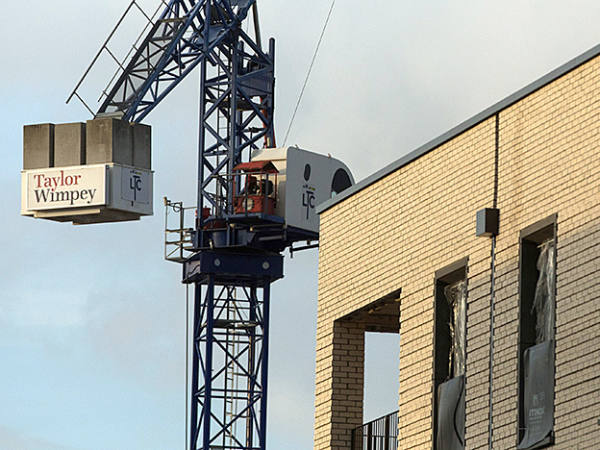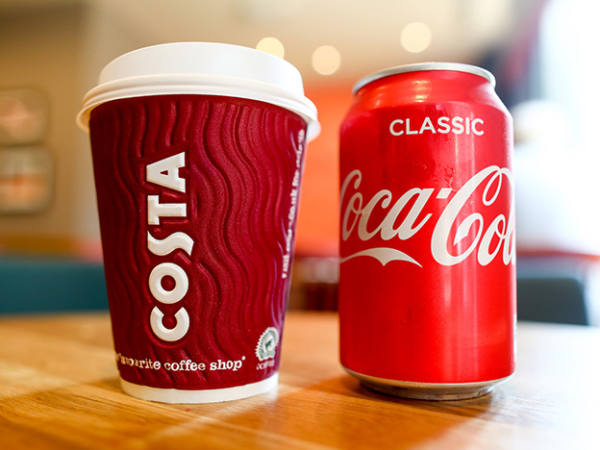On most valuation measures, BT (BT.A) shares have looked cheap for some time. As many seasoned investors know, shares can be cheap for good reasons or can stay cheap and unloved for longer than their patience can bear.
BT has some very good assets but also faces a large number of risks that could worry shareholders. Are BT shares a compelling buy right now or do they represent a classic value trap that will end in disappointment?
The key to making shareholders better off
The bull case for BT shares is that the company owns two very attractive assets that have the potential to grow profits and become more valuable.
The first one is Openreach and the second is the EE mobile network, which resides in BT’s consumer division. These two business areas accounted for nearly 80 per cent of BT’s total operating profits in the year to March 2023.
The global business, which sells IT services to companies, is not going to be a game-changer for BT shareholders and should arguably be sold. The entreprise division – business telecoms and wholesaling – has been in decline, but could start to grow again if BT’s investment in fibre-optic broadband pays off.
Openreach owns and operates the biggest UK nationwide telecoms network consisting of things such as copper cables, fibre-optic cables, ducts (pipes and tubes that carry all the cables), switching equipment and lots of local telephone exchanges. It has a route into most homes and businesses in the country.
For years, BT used Openreach as a cash cow, squeezing the last drops of value out of its ageing copper network. Critics say that the company was significantly underinvesting and putting the UK in the broadband slow lane.
One way to look at the underlying cash generation of a business division is to take information found buried in the company’s accounts. You will usually be able to see earnings before interest, tax, depreciation and amortisation (Ebitda) or calculate it yourself by adding operating profit to the depreciation and amortisation figure. You then subtract the capital expenditure (capex) figure. Ebitda minus capex is a reasonable proxy for pre-tax free cash flow.
From 2013 to 2018, Openreach comfortably generated over £1bn of free cash flow on this basis. Since then, capex has increased significantly as the company is spending £15bn to create a national fibre-optic network connected to people’s homes. This is known as fibre to the premises (FTTP).
If all goes well, Openreach will be offering FTTP services to 25mn premises by 2026. BT’s consumer division hopes that this will allow it to increase its FTTP customer base from around 1.8mn currently to between 6.5mn and 8.5mn by 2028-30.
Should it be successful in achieving this, then revenues and profits will grow as capex will be reduced. This would see a big increase in free cash flow and should make BT’s shareholders better off with bigger dividends and a higher share price.
When combined with EE, BT aims to offer consumers a compelling converged network service – where customers seamlessly shift from using FTTP to 5G mobile networks – and take market share.
EE is aiming to increase its 5G customer connections from 8.6mm currently to 13mn-14.5mm by 2028-30 by improving its UK network coverage from 68 per cent to 98 per cent.
Having summarised the bull case for BT shares, let’s have a look at some of the major threats the company faces.
The threat of alternative fibre networks (altnets)
Not so long ago, FTTP would have been seen as an easy win for Openreach given its geographic reach and dominance. This cannot be taken for granted now. Huge amounts of money are being poured into the sector by alternative networks looking to cherry-pick locations where Openreach currently has no FTTP presence or no interest in building one.
The biggest threat to Openreach undoubtedly comes from Virgin Media. It aims to serve 23mn premises by 2026, up from around 16mn currently. Its ownership of the O2 mobile network also makes it a growing converged network competitor to BT.
CityFibre has been in business since 2011 and is backed by financial heavyweights such as Goldman Sachs, Middle East sovereign wealth funds and private equity. City Fibre is a wholesaler rather than a direct seller to consumers and includes TalkTalk and Vodafone as two of its biggest customers. Apart from Virgin Media, it looks to be the biggest threat to Openreach.
The threat probably comes from CityFibre being used as an industry consolidator to create a third major national network player. Combining CityFibre with the likes of Community Fibre (a London-focused FTTP), Hyperoptic and rural providers such as Gigaclear is a likely exit route for its investors.
As well as competing on price, the altnets are offering consumers two other things that BT and Virgin currently don’t. One is symmetrical upload speeds – where broadband upload and download speeds are the same – and another is fixed price contracts.
The latter is particularly relevant given the cost of living crisis and BT and Virgin’s recent in-contract price increases of more than 14 per cent.
In order to offer bundled services, companies such as Hyperoptic have partnered with Sky to offer combined broadband and TV services – something that it arguably has to do to compete.
On paper, it looks as though Openreach is facing lots of competition, but how big is the threat of the altnets in reality? Some of them look to be struggling. Hyperoptic and Zzoomm have recently announced redundancies.
Openreach is also taking the competitive threat seriously and has offered internet service providers (ISPs) discounted prices if they use Openreach to provide their customers with FTTP. Despite complaints from altnets, the regulator, Ofcom, has ruled that Openreach’s pricing is not anti-competitive.
Pension fund worries have not gone away
Apart from competitive threats, BT’s pension fund deficit continues to be a cause of concern. On an accounting basis (IAS 19), BT’s main pension scheme (BTPS) has seen its deficit come down from the worrying levels seen in 2018 and 2019. As of March 2023, the scheme’s assets were £2.9bn less than its liabilities (the present value of future pension payments).
Rising interest rates bring down pension fund liabilities. However, if the pension fund is mainly invested in bonds – or bond-like assets – as BT’s is then asset values can fall heavily as well (rising interest rates see bond prices fall and vice versa) as they did last year.
However, it is the actuarial deficit that determines the cash deficit top-up contributions that BT must pay every year. The last actuarial valuation of June 2020 was a deficit of £8bn, with BT paying at least £1bn of cash deficit payments over the past couple of years.
The latest actuarial valuation was due on 30 June this year and has not been published yet. A guess is that top-up payments and higher interest rates will have reduced the deficit, but higher inflation expectations could offset some of this.
Is BT’s current dividend safe?
The problem for BT shareholders is that pension deficit cash payments reduce the company’s free cash flow, and with it its ability to pay dividends. BT gives investors guidance on what it calls normalised free cash flow. This ignores any cash top-up payments to plug the pension fund deficit. If these are included, BT’s dividend has not been covered by free cash flow for some time.
Looking at City analysts’ consensus forecast for BT’s free cash flow, it seems that they are more in tune with BT’s normalised free cash flow guidance – they ignore pension top-up payments. Assuming that these top-up payments come down from £1bn to around £600mn, and adjusting consensus forecasts, it appears that the dividend is uncovered in 2024 before being covered – just – in 2025 and 2026.
Arguably, this more conservative view of BT’s free cash flow generation explains why BT’s dividend growth is expected to be minimal for the next three years.
It would not take much of a profit downgrade to make BT’s current dividend payout vulnerable to a cut. It is also worth noting that the company’s dividend track record does not provide much in the way of reassurance here. BT has seen three major dividend cuts since the late 1990s.
This is something to bear in mind if you are tempted by the chunky dividend yield on BT shares of 6.1 per cent at the current share price of 125p.
BT Sport joint venture could still be costly
The decision to eventually get out of sports broadcasting is a good one. BT has spent billions on sports broadcasting rights since 2013 in an expensive attempt to retain and gain broadband customers. On a standalone basis, BT Sport has been lossmaking and there is no guarantee it will ever be profitable.
BT has merged BT Sport with Eurosport in a 50:50 joint venture with an aim to sell out completely within four years. However, BT will still be on the hook for its share of the broadcasting rights payments until then. It has also provided the joint venture with a minimum revenue guarantee of £500mn per year for the first four years.
Given that revenues are currently short of this level, BT has a liability of £712mn on its balance sheet to cover the guarantee which is not an insignificant sum.
An new government
BT and EE have undoubtedly had a significant monetary benefit from having an inflation (CPI) plus 3.9 per cent price increase every March. Customers typically locked into 24-month contracts have recently seen their monthly bills shoot up by more than 14 per cent, much to their displeasure.
At the moment, the odds are on a Labour victory at the next UK general election. Should it win, it has not only promised mandatory social broadband tariffs but also the abolition of mid-contract price increases and the reduction of very high early termination charges.
This could see a material hit to the cash flows of BT and EE while increasing competition by making it less expensive to leave while in contract.
Is the bad news all in the price?
The current valuation of BT shares suggests a very tough outlook for the company. At 125p, they trade on a next 12 months’ forecast price/earnings (PE) ratio of just 6.8 times.
Looking at enterprise value to Ebit (EV/EBIT) – which allows better comparisons between companies than a PE ratio because it ignores issues such as financing and tax rates – BT is the cheapest major network telecom stock in Europe.
Some might say that the valuation is justified for a company with little to no expected earnings per share (EPS) growth over the next few years while facing a number of risks discussed above.
Contrarian value investors may view this valuation as an opportunity, as it is too pessimistic, and may feel that all the risks are in the price. One such investor could be telecoms tycoon Patrick Drahi whose Altice UK has built a 24.5 per cent shareholding in BT.
He has said he has no intention of bidding for BT, and it is possible that he might not be able to do so given that it is an asset of national importance. The same reasoning would apply to Deutsche Telekom and its 12 per cent holding.
The problem with very cheap shares is that you can be waiting a long time for things to change. Given that a takeover is unlikely and that it will take some time for BT’s investments to pay off, it is possible that BT shares could stay cheap for a while yet.


















